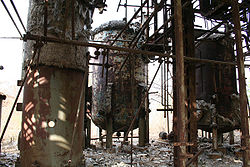In my opinion one of the most interesting and fundamental cases of company law is Salomon v Salomon& Co. As I found it very interesting when I did Company law I want to share with my readers the background of this case, the judgments of the CA and HL and my thoughts about this fundamental principle of company law.
Corporate personality has been created by statute in the first half of the 19th century and the full significance of this provision was not appreciated until the famous case of Salomon v Salomon. On incorporation, a company becomes a separate legal entity separate and distinct from its shareholders and it is not the agent of those shareholders, not even if it is one-man company with one shareholder controlling all its activities. This fundamental principle of company law was established by the House of Lords in Salomon case and is known as the Salomon principle.
Salomon v. Salomon & Co. [1897] A.C. 22 (H.L.)
Background of the case
Aron Salomon was a successful leather merchant who specialized in manufacturing leather boots. A. Mr Salomon ran his business as a sole proprietor. Salomon decided to incorporate his business as a Limited Liability Company when his sons had become interested in taking part in the business.
The shareholders were Mr. Salomon, his wife, daughter and four sons. Mr Salomon was the managing director and two of his sons became the directors of the company. Mr Salomon owned 20,001 of the company's 20,007 shares. The remaining six were shared individually between the other six shareholders. Mr. Salomon sold his business to the new corporation for almost £39,000, of which £10,000 was a debt to him. He was the company's principal shareholder and its principal creditor.
Unfortunately the company went into liquidation. The liquidator claimed that the debentures used by Mr. Salomon as security for the debt were invalid on the grounds of fraud. The judge, Vaughan Williams J. ruled that since Mr. Salomon had created the company solely to transfer his business to it, the company was in reality his agent and he as principal was liable for debts to unsecured creditors.
CA decision
The C.A ruled against Mr. Salomon, though on the grounds that Mr. Salomon had abused the privileges of incorporation and limited liability. The lord justices of appeal described the company as a myth and hold that the incorporation of the business by Mr. Salomon had been a mere scheme to enable him to carry on as before but with limited liability.
HL decision
The House of Lords overturned the CA decision. It was held that there was nothing in the Act about whether the subscribers should be independent of the majority shareholder. The company was duly constituted in law and it was not the function of judges to read into the statute limitations they themselves considered expedient. Lord Halsbury stated that the statute "enacts nothing as to the extent or degree of interest which may be held by each of the seven shareholders or as to the proportion of interest or influence possessed by one or the majority over the others."
"Either the company was a legal entity or it was not. If it was, the business belonged to it and not to Mr Salomon. If it was not, there was no person and nothing to be an agent at all”
Lord Macnaughten stated that the company was also not to be regarded as an agent of the owner and the company is at law a different person altogether from the subscribers to the memorandum and the company is not in law the agent of the subscribers or a trustee for them.
Exceptions to the fundamental principle of corporate personality
The law has made exceptions to this fundamental principle in order to prevent unfair or fraudulent practices by those in charge. The courts in cases where a company’s separate legal personality is being used as fraudulent or unjustly device, the courts will lift the veil.
· Lifting the veil
In a number of cases the courts are rise to ignore the veil of incorporation and hold members personally liable for the debts of the company. Those exceptions to the general principle in Salomon, can be found in both common law and statute, are known as lifting the veil. However, there are two common features to those exceptions: 1) They will only apply to members of the company who created the situation e.g. directors.
2) They are designed to prevent the protection of limited liability being abused to perpetrate any wrongdoing or fraud.
My opinion is that the separate personality of a company creates a range of problems. This is attributed to the fact that the company, which is regarded as a person in law, can only function through the humans who are running the business in which the company is involved. The law should regulate the relationships between the company and the outsiders who do business with the company as well as the relationships between the company and its shareholders or members and creators. It is impossible to find a legal consistent basis for the cases in which the courts have decided to ignore the separate legal personality. In many cases the courts are unwilling to lift the veil and this can be seen as unfair and unjust.
For further reading:
Simon Goulding, Company law, (3rd edn , Routledge, 2005)
CLEMENT CHIGBO, “Lifting The Veil Of Incorporation”, February 23rd, 2007










